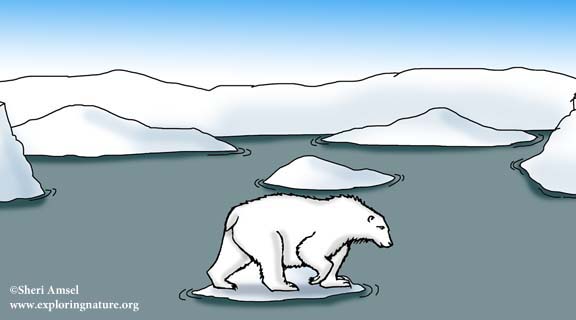

To read more about this off site, go to our resource from Science Daily: LINK
From: “Polar Bears Exhibit Genome-Wide Signatures of Bioenergetic Adaptation to Life in the Arctic Environment.” Feb. 6, 2017 The journal Genome Biology and Evolution.
Essential Questions:
1) How do male polar bears, who don't hibernate, survive the extreme cold of the Arctic?
2) How might this research be used to develop technology for human use?
______________________________________________________________________________
Using Discoveries and Inventions as Scientific Phenomena to Integrate with NGSS:
______________________________________________________________________________
Scientific Phenomena can be used as a tool to anchor a science unit involving a series of lessons to engage in deeper science learning – or what is being called “Three Dimensional Learning”.
1) Describe the phenomena in a way that your students can understand and which sparks their imagination.
2) Create Essential Questions for them to answer to explain the phenomena.
3) Identify the NGSS Disciplinary Core Ideas which you are targeting.
4) Provide clear directions for a process they should use to try to answer the questions using the NGSS Science and Engineering Practices to frame as your guideline.
5) Name the Crosscutting Concepts that students should be aware of throughout the lesson.
6) Discuss the Connections to Nature of Science.
7) Make note of other questions generated in the process of exploring this Scientific Phenomena.
Disciplinary Core Ideas
LS2.A: Interdependent Relationships in Ecosystems: LINK
• Organisms, and populations of organisms, are dependent on their environmental interactions both with other living things and with nonliving factors. (MS-LS2-1)
• In any ecosystem, organisms and populations with similar requirements for food, water, oxygen, or other resources may compete with each other for limited resources, access to which consequently constrains their growth and reproduction. (MS-LS2-1)
• Growth of organisms and population increases are limited by access to resources. (MS-LS2-1)
• Similarly, predatory interactions may reduce the number of organisms or eliminate whole populations of organisms. Mutually beneficial interactions, in contrast, may become so interdependent that each organism requires the other for survival. Although the species involved in these competitive, predatory, and mutually beneficial interactions vary across ecosystems, the patterns of interactions of organisms with their environments, both living and nonliving, are shared. (MS-LS2-2)
